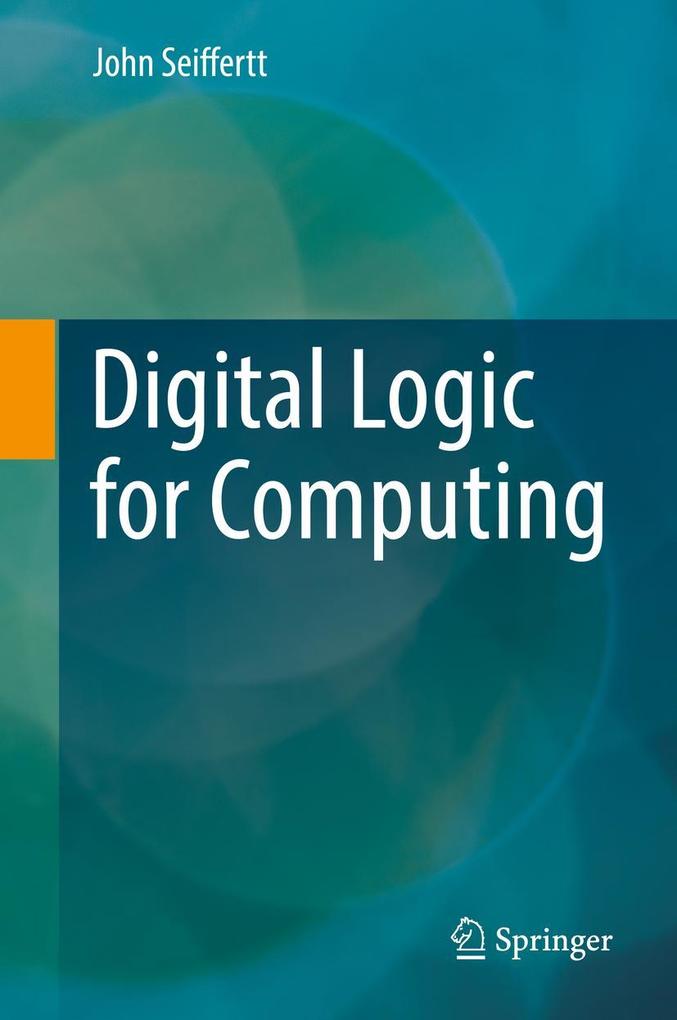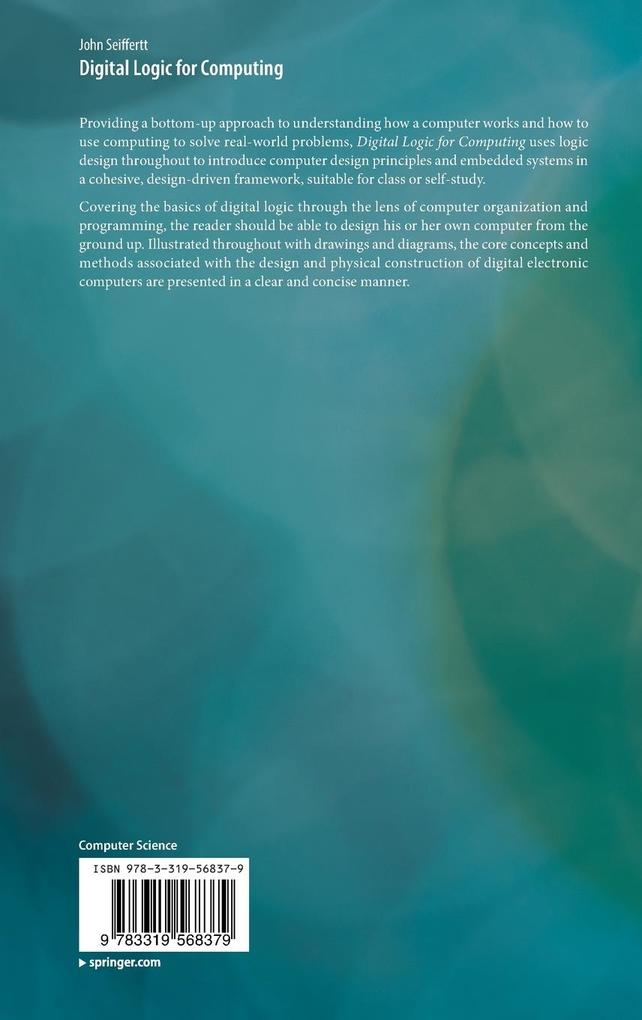
Zustellung: Di, 01.07. - Fr, 04.07.
Versand in 1-2 Wochen
VersandkostenfreiBestellen & in Filiale abholen:
The book provides a bottom-up approach to understanding how a computer works and how to use computing to solve real-world problems. It covers the basics of digital logic through the lens of computer organization and programming. The reader should be able to design his or her own computer from the ground up at the end of the book. Logic simulation with Verilog is used throughout, assembly languages are introduced and discussed, and the fundamentals of computer architecture and embedded systems are touched upon, all in a cohesive design-driven framework suitable for class or self-study.
Inhaltsverzeichnis
1 The Digital Electronic Computer. - 2 Boolean Algebra. - 3 Logic Function Synthesis. - 4 Basic Logic Function Minimization. - 5 Advanced Logic Function Minimization. - 6 Logic Gates. - 7 Unsigned Arithmetic. - 8 Signed Numbers. - 9 Other Digital Representations. - 10 Encoding Code. - 11 Sequential Logic Elements. - 12 Multiplexers and Comparators. - 13 Decoders and Register Files. - 14 Counters. - 15 Datapaths. - 16 Basic Computer Datapath. - 17 State Machines. - 18 Datapath Controllers. - 19 State Machine Theory and Optimization. - 20 Instruction Processor Design.
Produktdetails
Erscheinungsdatum
09. Juni 2017
Sprache
englisch
Auflage
1st edition 2017
Seitenanzahl
336
Autor/Autorin
John Seiffertt
Verlag/Hersteller
Produktart
gebunden
Abbildungen
XVI, 319 p. 254 illus.
Gewicht
670 g
Größe (L/B/H)
241/160/24 mm
ISBN
9783319568379
Entdecken Sie mehr
Bewertungen
0 Bewertungen
Es wurden noch keine Bewertungen abgegeben. Schreiben Sie die erste Bewertung zu "Digital Logic for Computing" und helfen Sie damit anderen bei der Kaufentscheidung.










